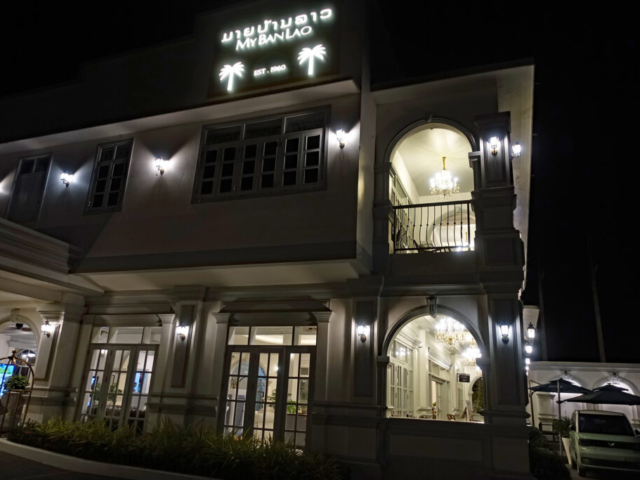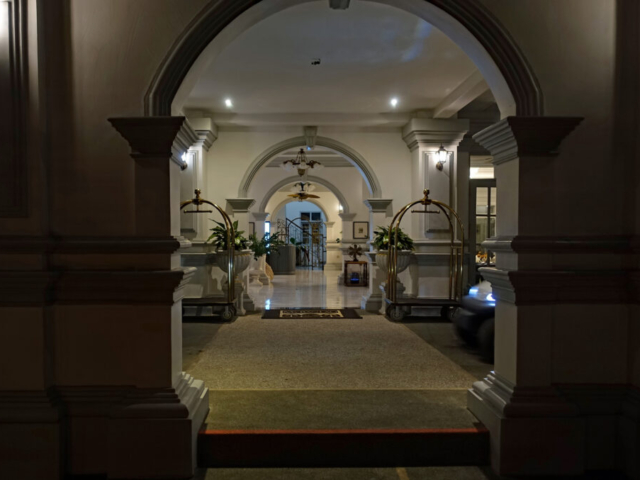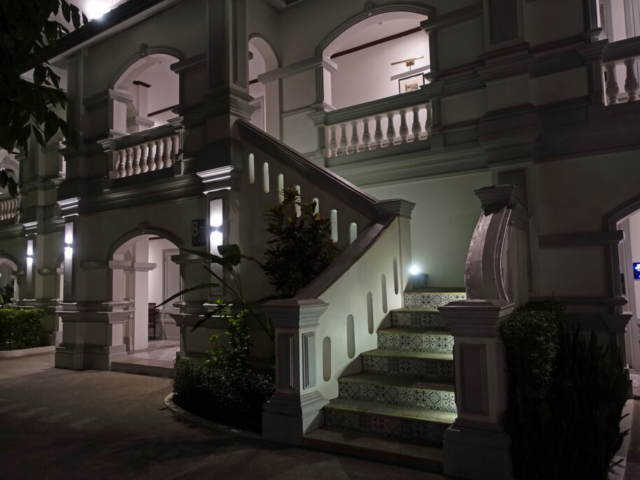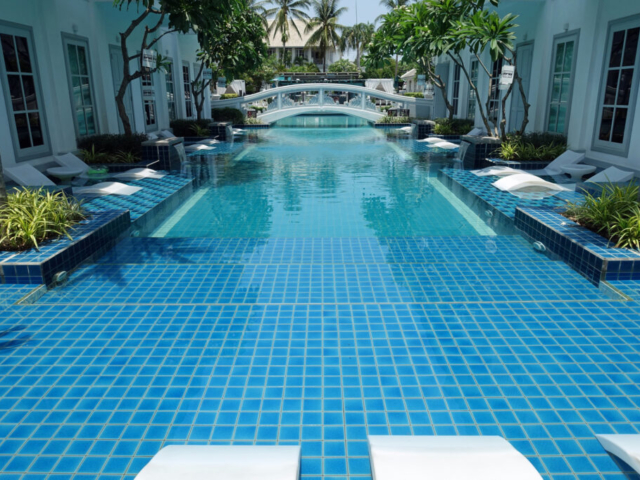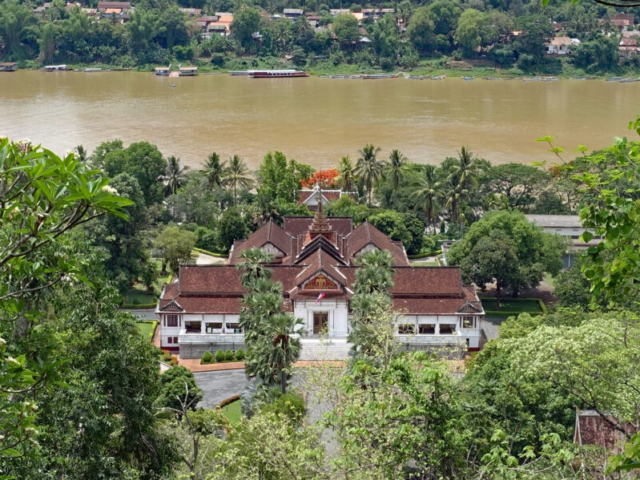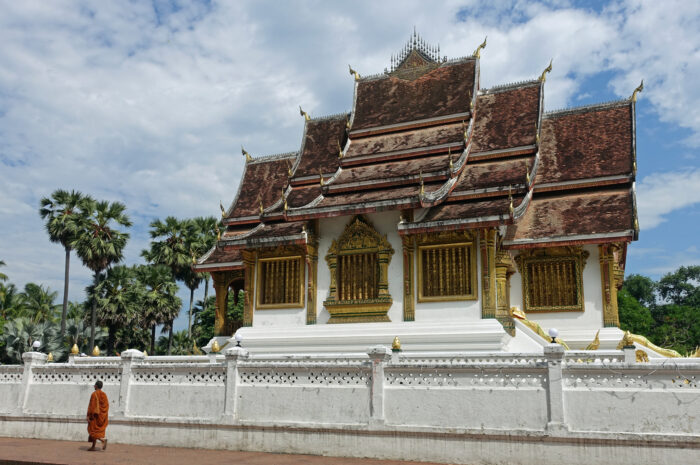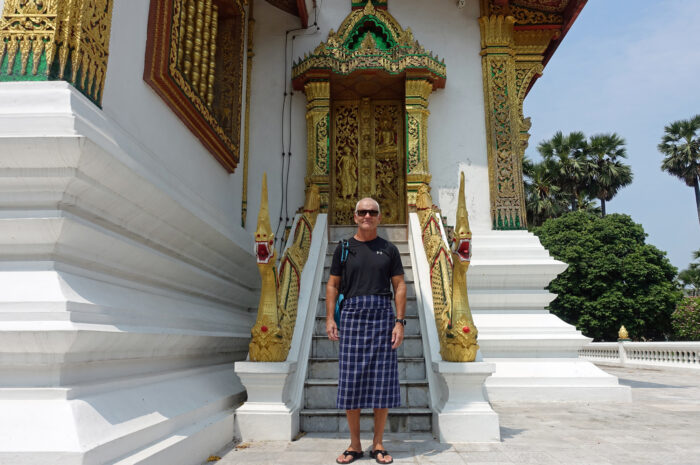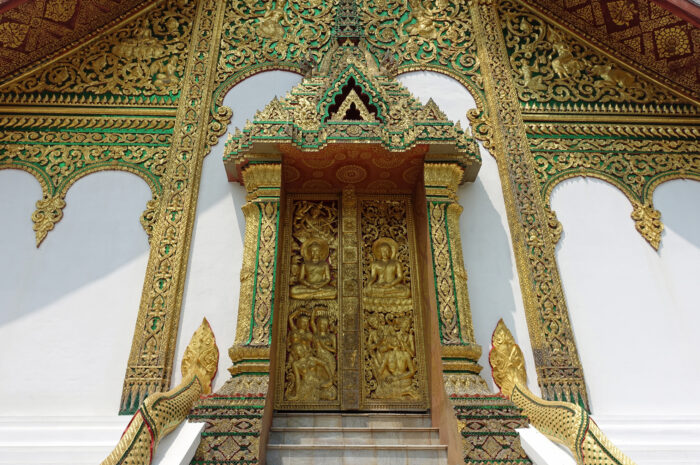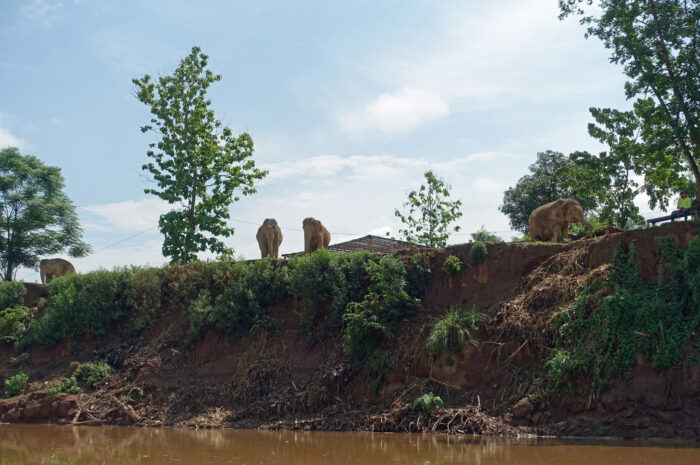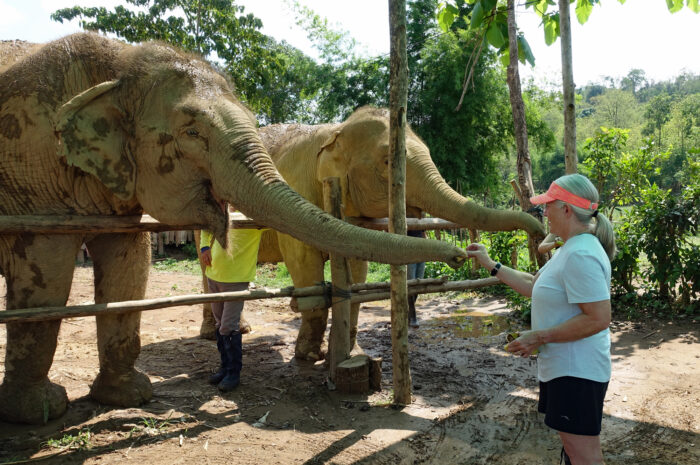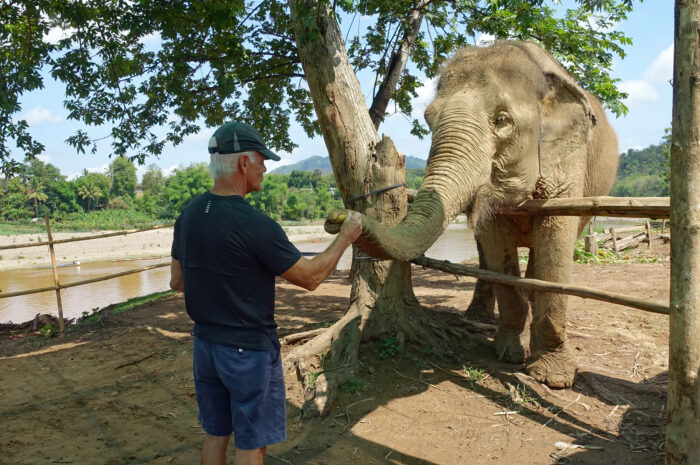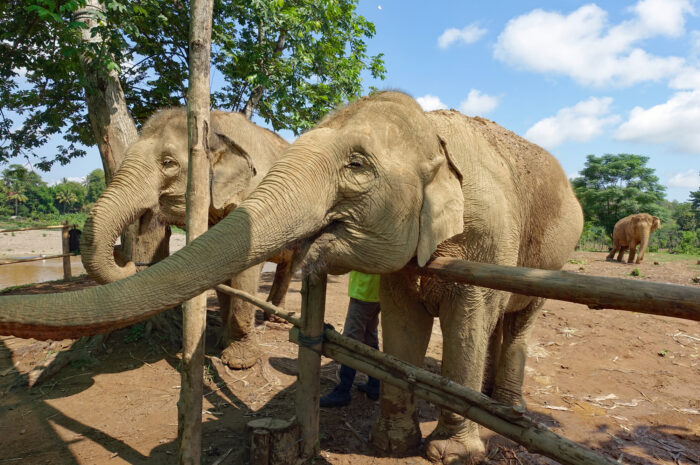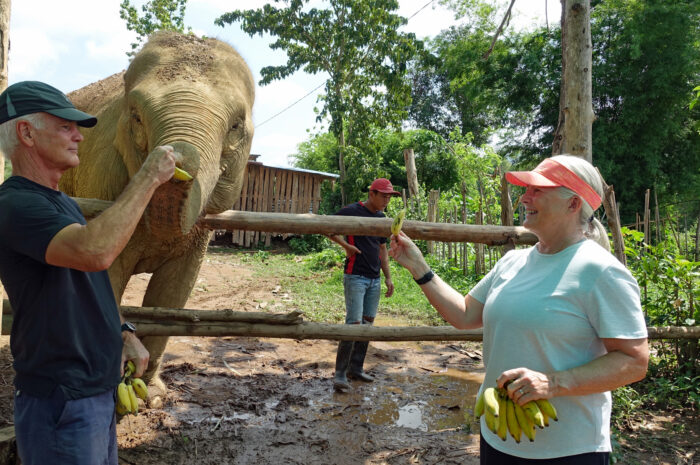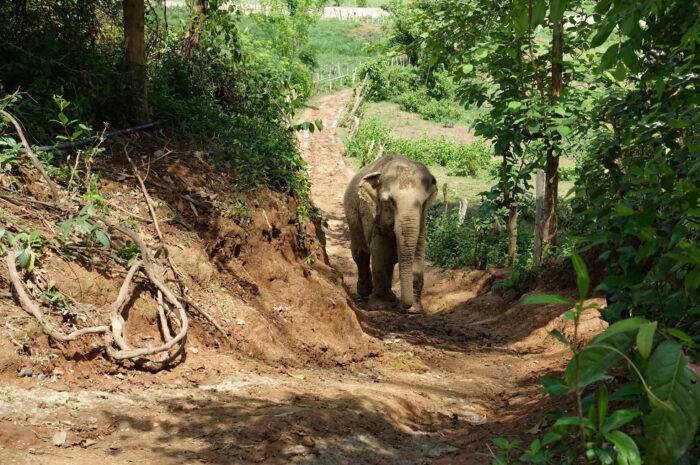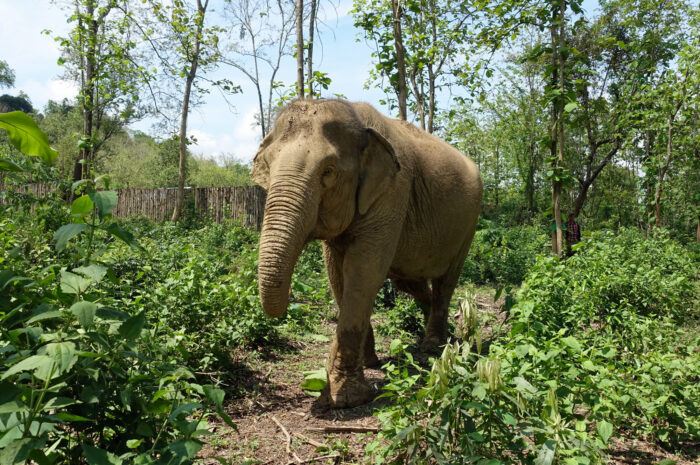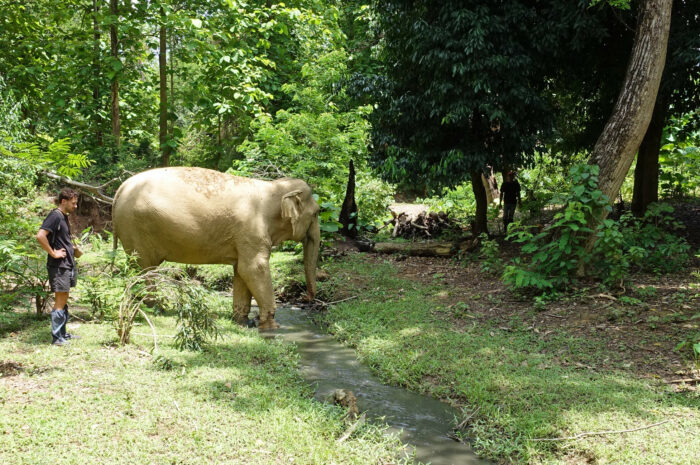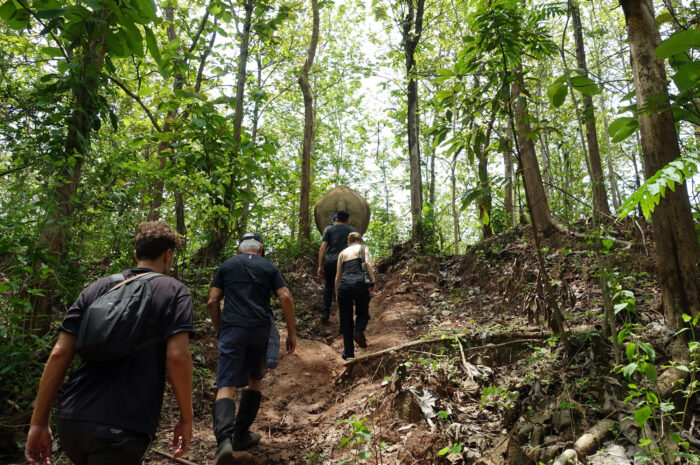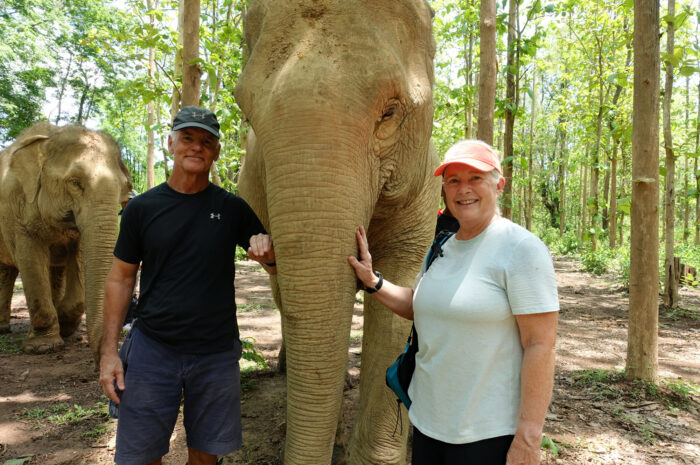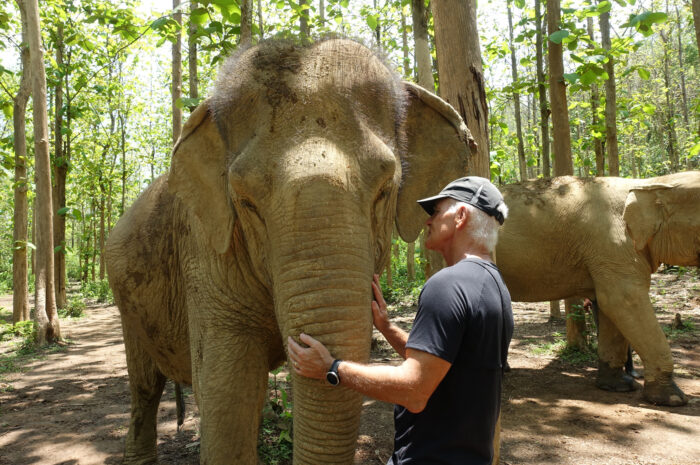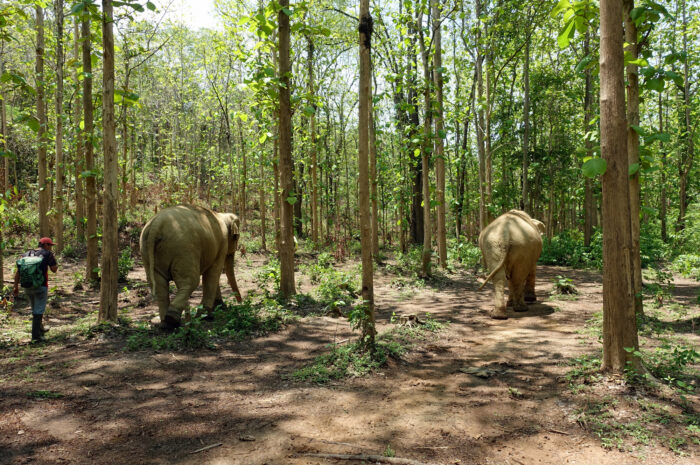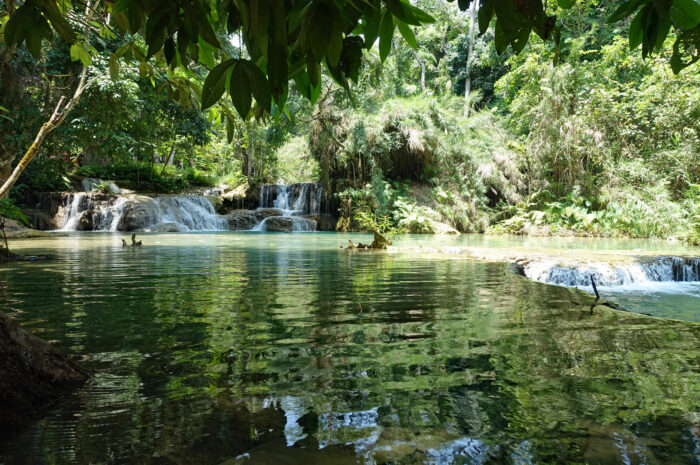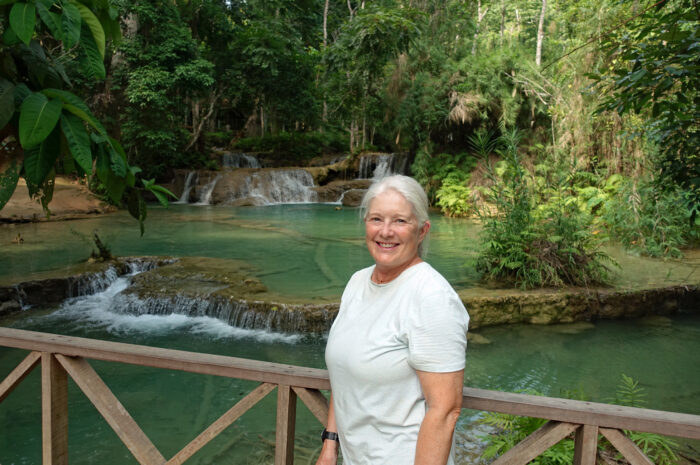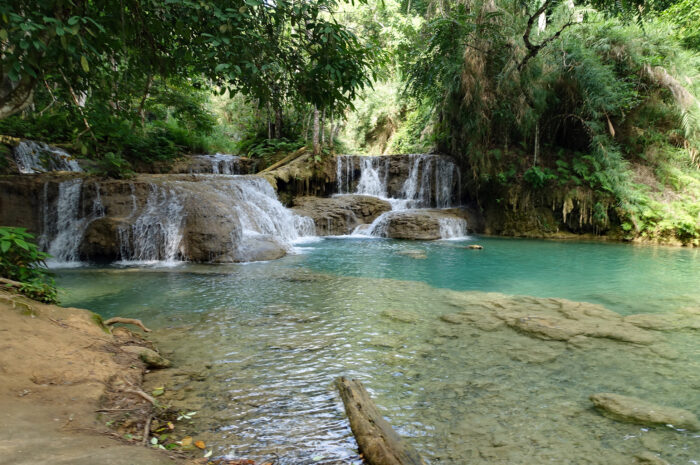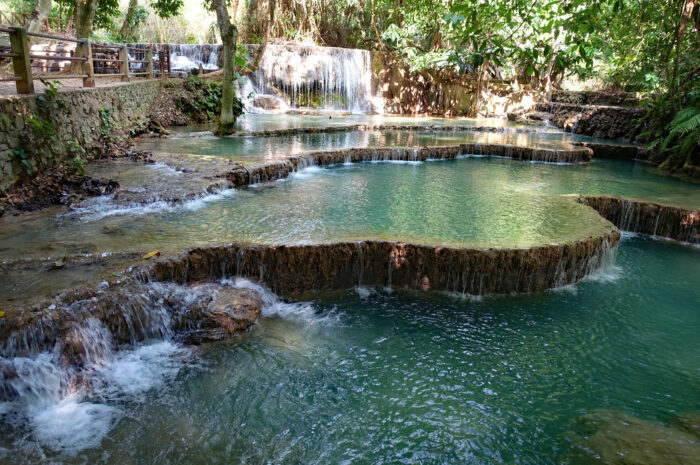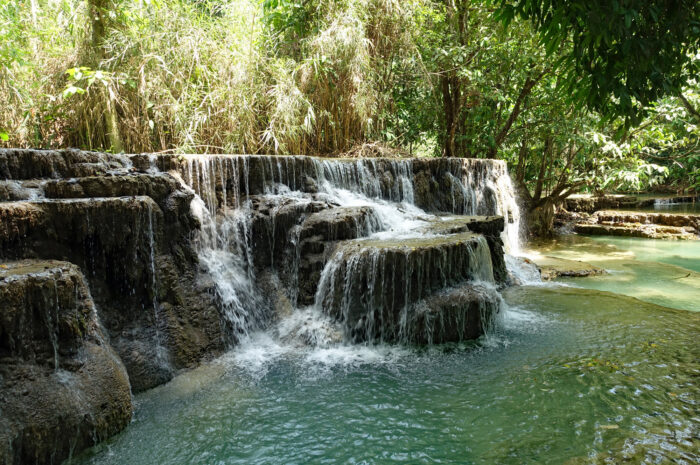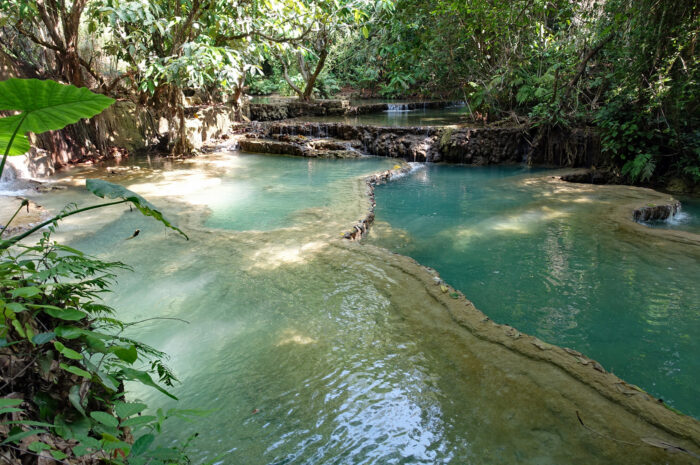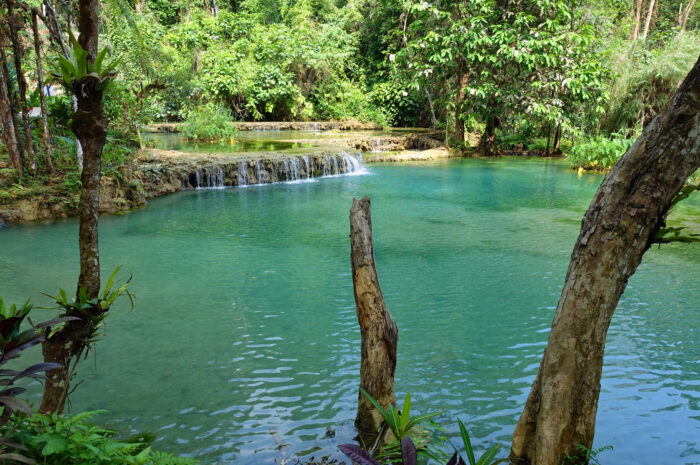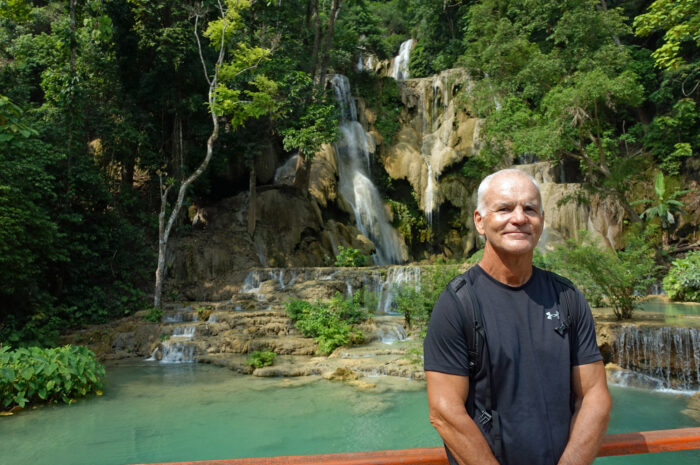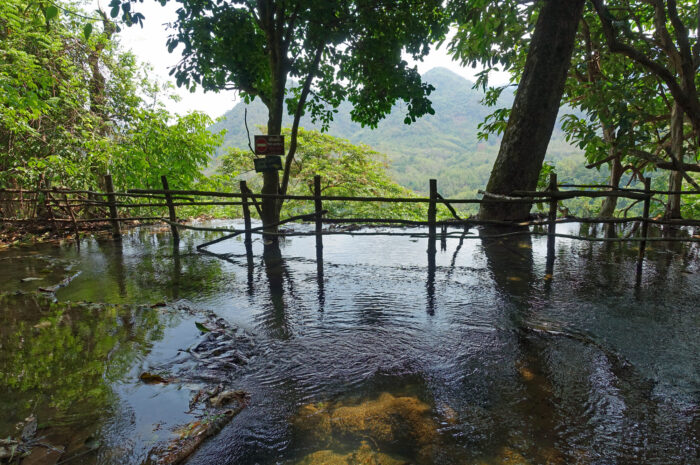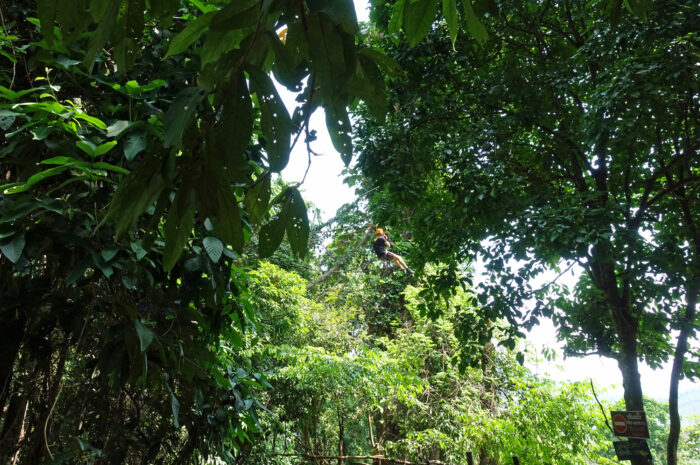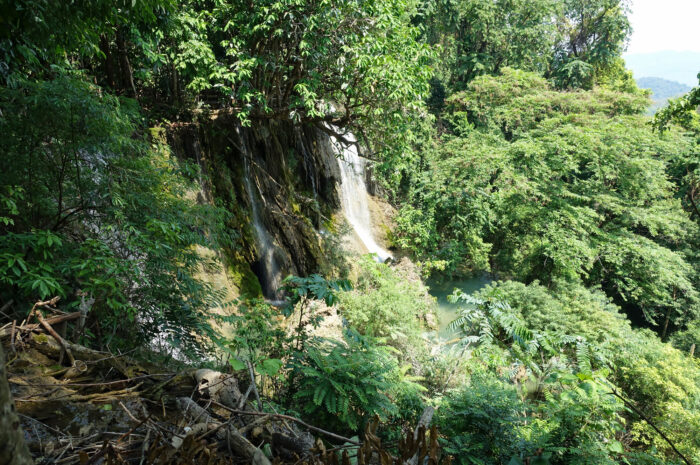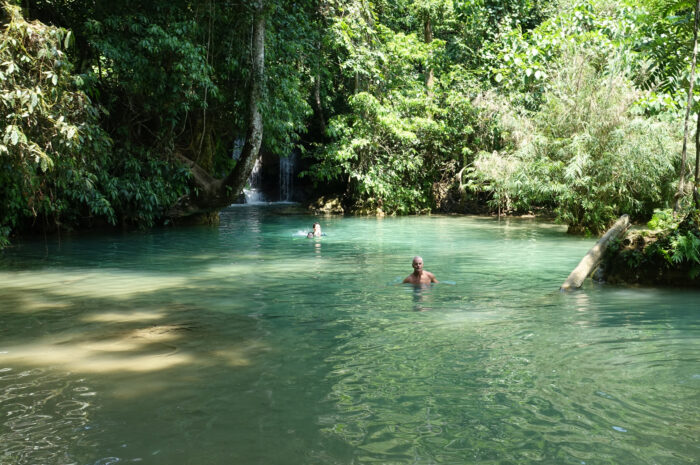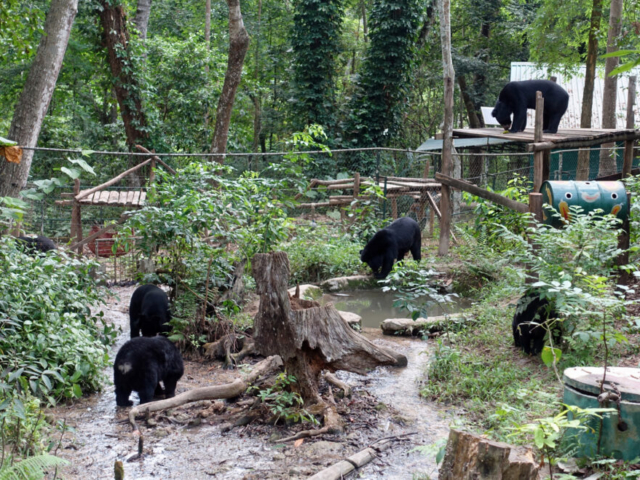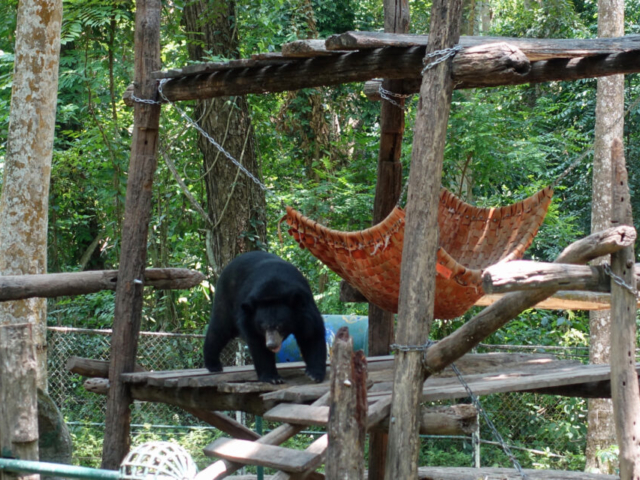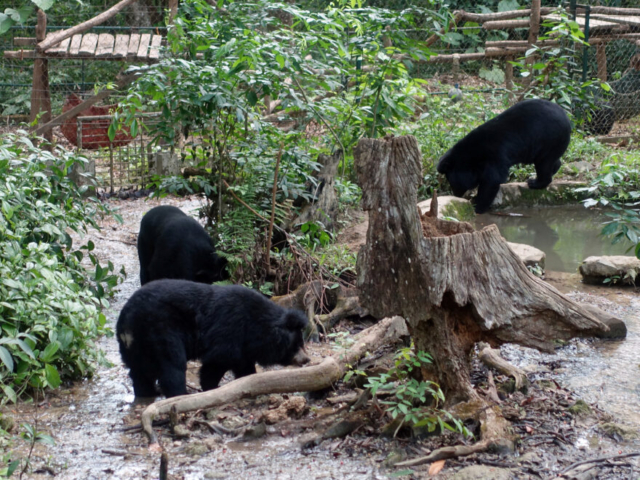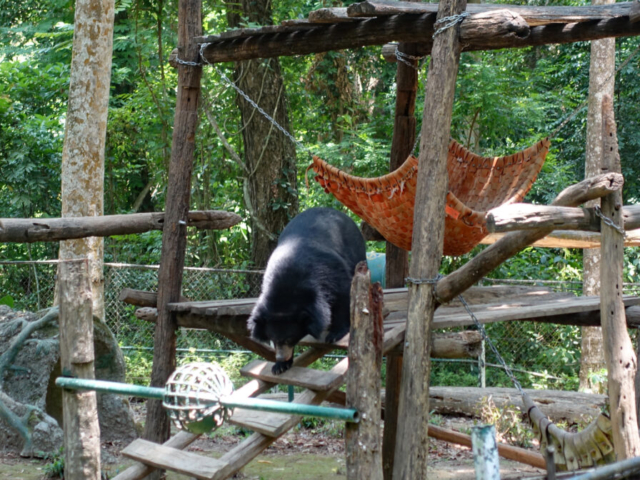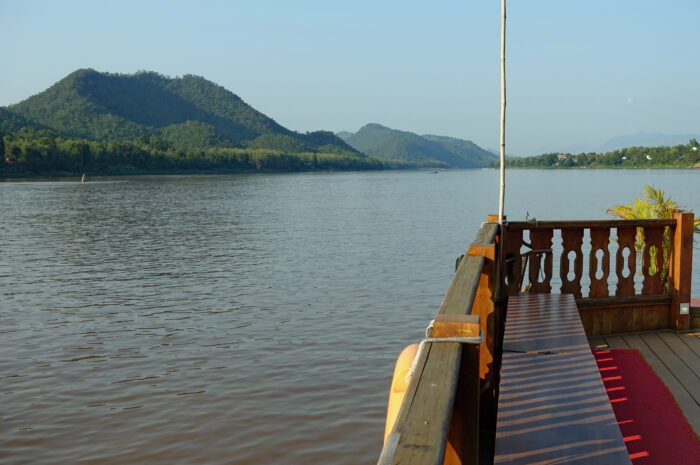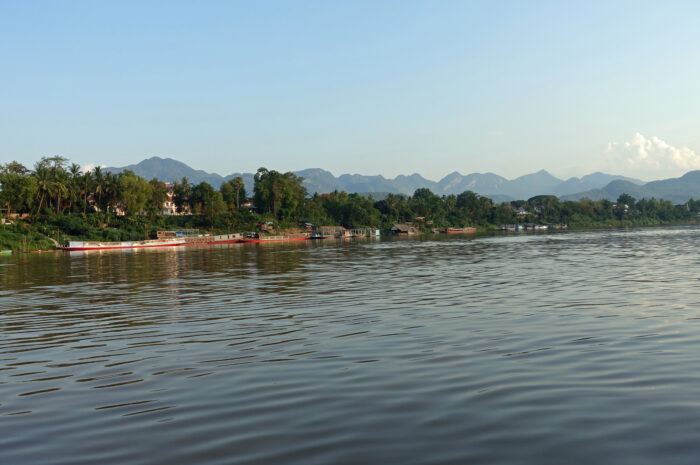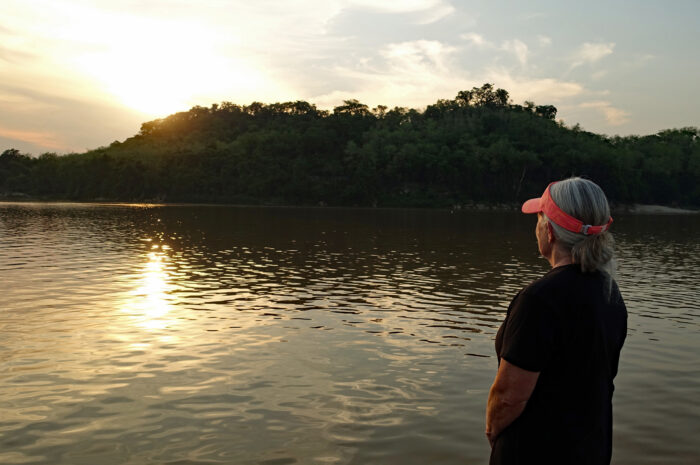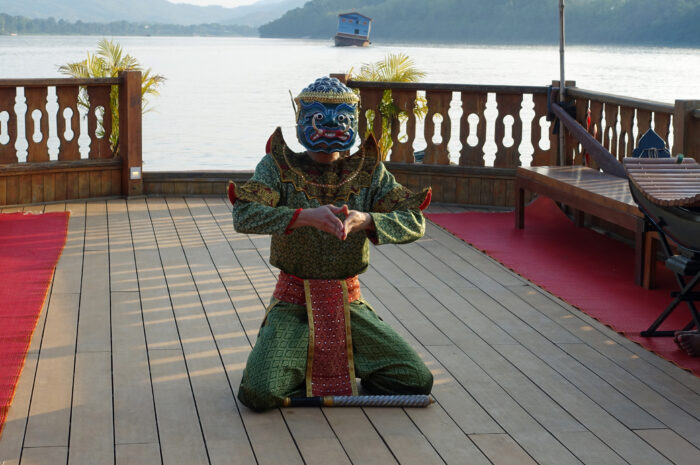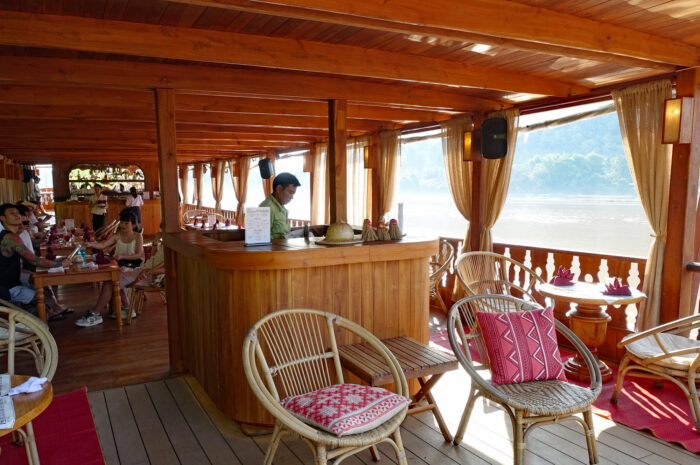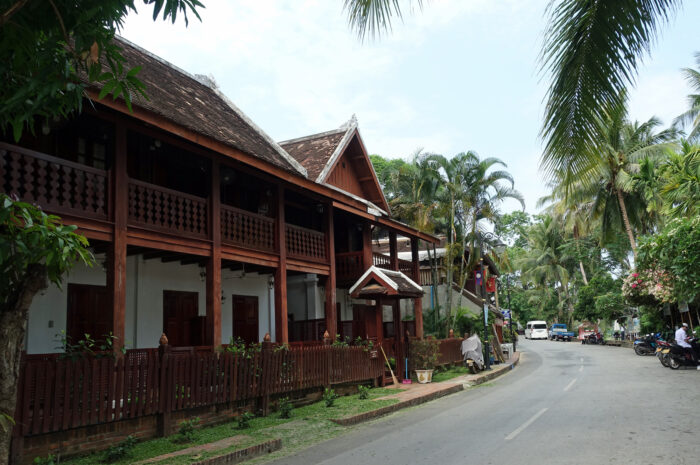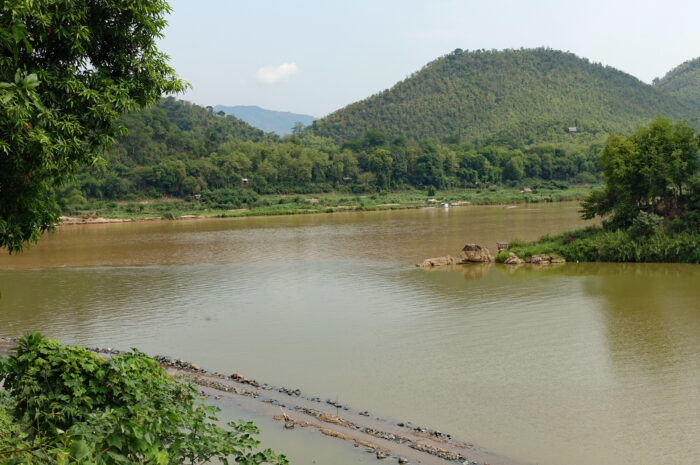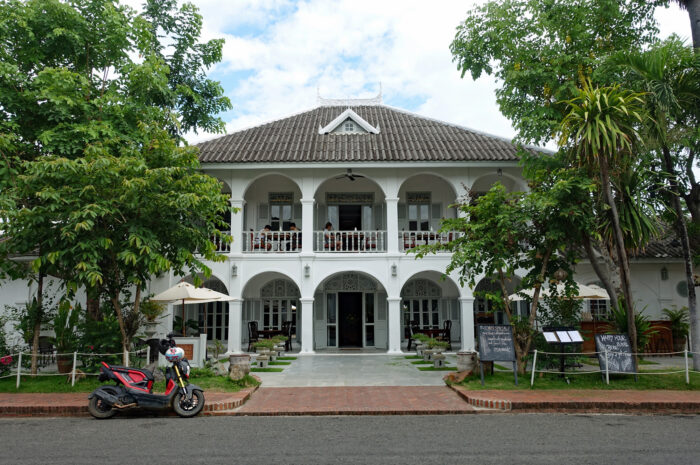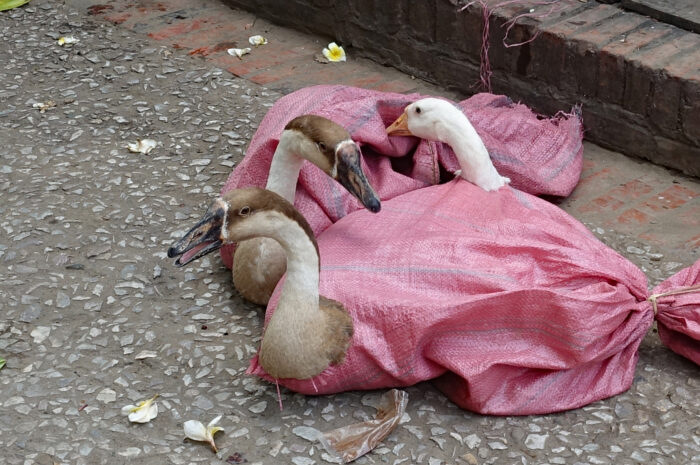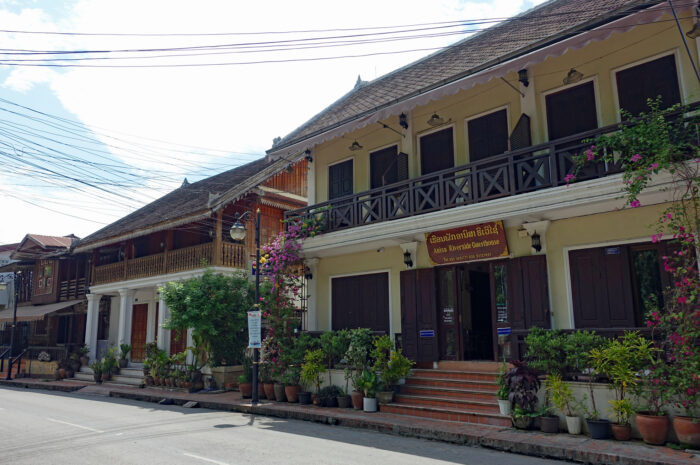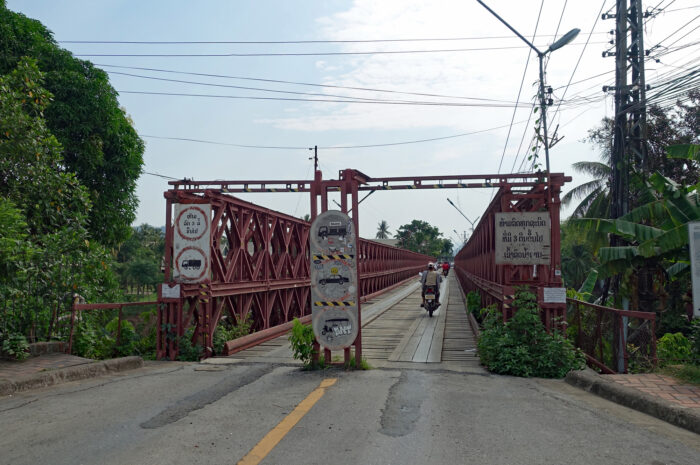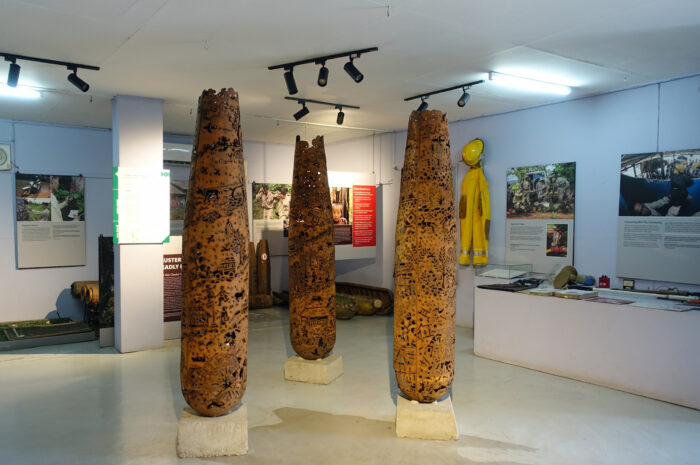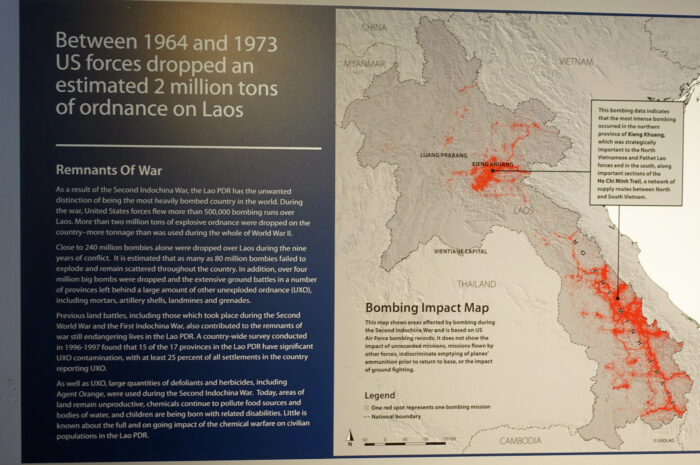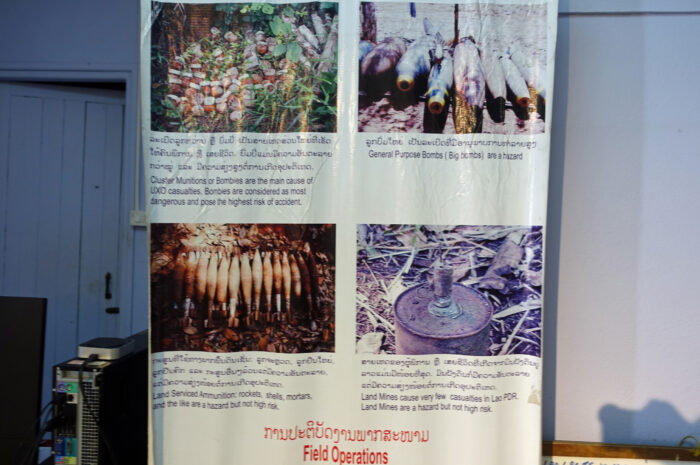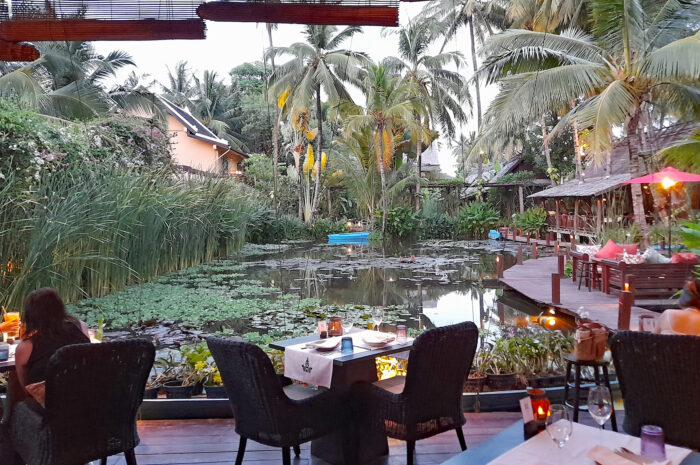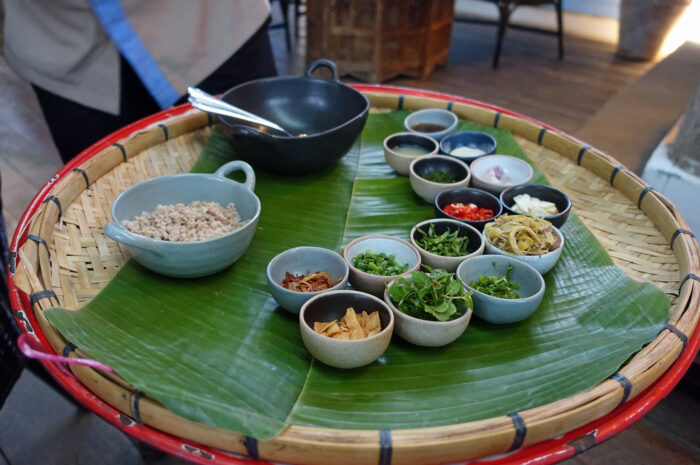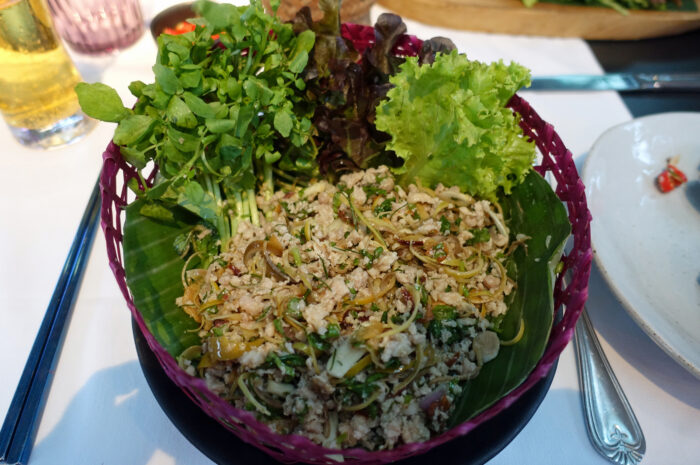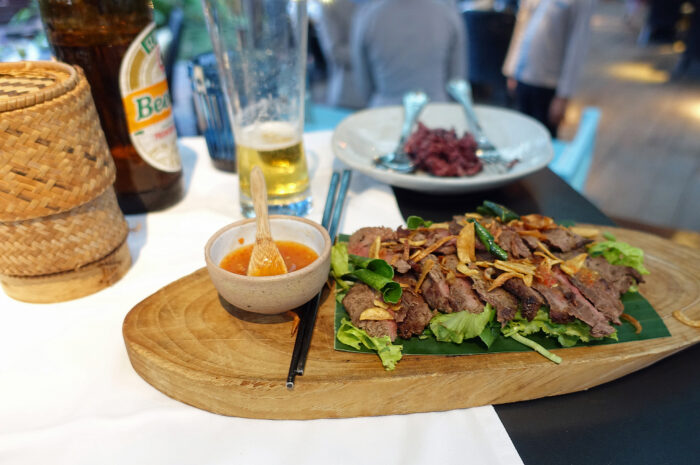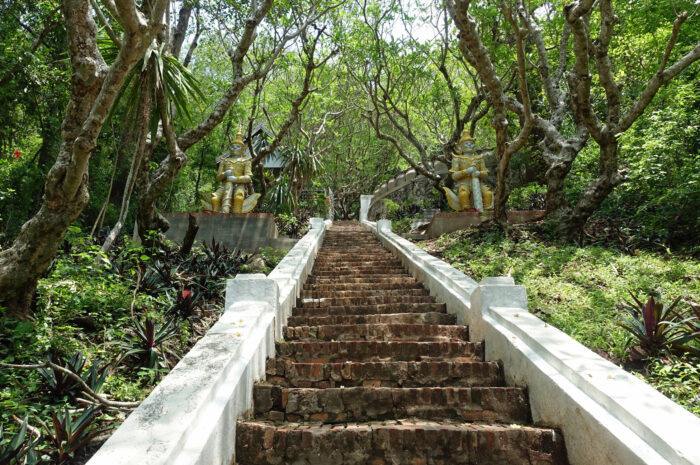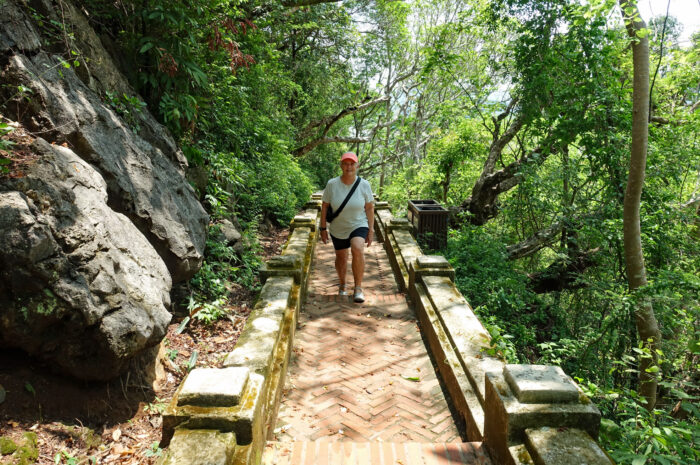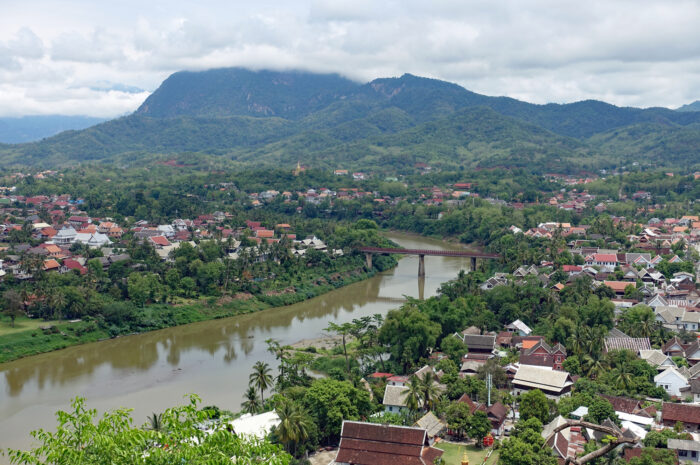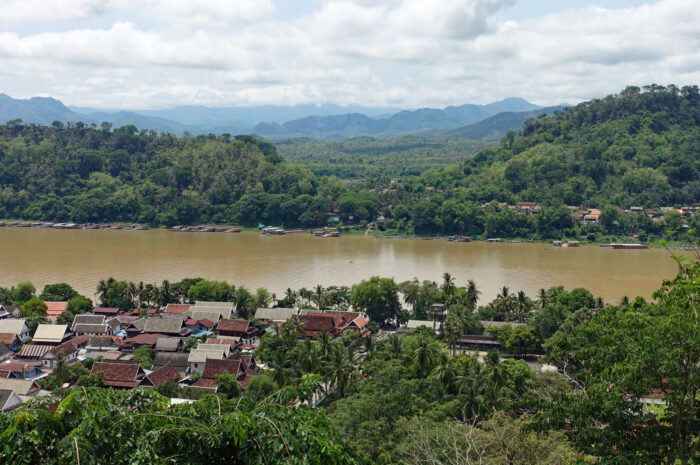
Laos has the unenviable distinction of being the most heavily bombed nation on earth per capita. We certainly did not know this, so our time here was educational as well as interesting. In 1962 the USA, both Vietnams, and several other nations agreed to respect the neutrality of Laos, which borders Vietnam to the west. However, North Vietnam immediately broke the accord, moving troops and supplies through Laos along the Ho Chi Minh Trail, rather than traversing the heavily guarded demilitarized zone that separated it from South Vietnam. In response to these transgressions by the North Vietnamese, the Americans covertly dropped billions of pounds of bombs on Laos, including more than 270 million cluster bombs. Each of these cluster bombs contains 400-800 ‘bombies’ of which 30% generally did not explode on impact. The nine-year, secret war was so intense that on average a planeload of explosives fell every eight minutes. Yet, no matter what they tried, the Americans never succeeded in disrupting the North Vietnamese supply lines, nor did they prevent the fall of Laos to the communists in 1975. Hundreds of thousands of unexploded munitions continue to kill Laotians to this day 😢
Luang Prabang is the ancient capital of Luang Prabang Province in northern Laos, lying in a valley at the confluence of the Mekong River and the Nam Khan River. Inhabited for thousands of years, Luang Prabang was the royal capital of the country until 1975 when the communists took over. The city is known for its many Buddhist temples and monasteries and was listed as a UNESCO World Heritage Site in 1995 for its collection of well preserved architectural, religious, and cultural heritage. For us, Luang Prabang was a breath of fresh air after leaving Hanoi and its more than 8 million residents. With a population of around 56,000 life is much quieter here in Luang Prabang and going for walks is enjoyable.
One of the reasons we are here in Laos is that our 3-month Vietnam visa was expiring, and we needed to exit Vietnam to apply for another visa. Since last year, Vietnam tourist visas can only be applied for if you are out of the country and since we still had places to visit in Vietnam, we did a ‘visa run’. We spent nine days relaxing and exploring Luang Prabang, affording us an opportunity to learn about Laos history, which we knew very little about.
First though, we had to get a visa for Laos. Visas can be done on arrival, but I had read that the lineups can be quite long, so we chose to apply online for an e-visa, which ended up being an easy process. Visas can be applied for here on the official Lao government website. For the photo requirement, we took them on our phone against a white wall and there was no problem. We submitted the applications on a Sunday and received the visas on Thursday morning. The visa fee was USD $103.50 for both of us, expensive for a 9-day visit!
We had originally booked a room at a lovely guesthouse outside of town but when we realized that temperatures were going to be hovering around 40C, and we may be in our room a lot, we changed to a more upscale hotel closer to town with a pool, spa, and gym. They even upgraded us to a Junior Suite when we arrived because we were staying 9 nights. Interestingly, our new hotel has quite a history! Here is some info from the MyBanLao hotel website:
This property was once home to Ouane Rattikone, the General in command of the Royal Lao Armed Forces, the official military of the Royal Lao Government and the Kingdom of Laos during the 1960s. General Rattikone was an ally of the United States during the Vietnam War and provided critical military support against communist forces in the northern regions of Laos.
As a clandestine participant to the Vietnam War and its shadow secret war in Laos, this building functioned as the offices for USAID, America’s foreign aid mission during the secret war and a cover for CIA headquarters. Imagine, the parking area once had a helicopter landing pad!
Villa Ban Lao was one of the first hotels to open in Luang Prabang in 1999. Built in the classic colonial design and encircled by gardens and a lily-filled pond, the hotel offered an on-site restaurant. The late hotel structure of Villa Ban Lao has been transformed into the modern neo-classic elegance of MyBanLao. Renovation to the original buildings was undertaken with strict UNESCO construction codes to protect its heritage and architecture.
The Royal Palace Museum, situated on the banks of the Mekong River, was the last palace of Laotian royalty. The Palace was built between 1904 and 1909 during the time of French colonial occupation as the residence of the Laos Royal Family. When the communists came to power the Royals were forced to leave the Palace, after which it was turned into the National Museum. The private quarters of the Royal Family are to the back of the Throne Room and are kept in the same state as they were in 1975 with the original furniture. The reception room and throne room are magnificently decorated with murals and mosaics and the intricately carved, gold leaf overlay pedestals are stunning. Sadly, no photographs are allowed inside the museum. In fact, you must check your bag, camera and cell phone at a locker station and rent a sarong (both of us) to enter the museum. Tickets for the museum and temple were 60,000 Kip (USD $2.50) each and sarong rental was 10,000 Kip (USD 42 cents) each .
On the grounds of the Royal Place Museum is the Haw Pha Bang temple. An ornate temple that was started in 1963 to house Laos’ most sacred Buddha image. The works were halted when the communist party came to power in 1975 and did not resume until the 1990’s with the structure finally completed in 2006. We were not allowed to go inside or take photos of the interior; however, the exterior is beautiful.
The Mandalao Elephant Conservation is the only ethical, non-riding, elephant sanctuary around Luang Prabang. Their goal is to connect visitors with elephants in the most natural way possible, provide guests with an educational experience to spread the promotion of humane and ethical treatment of elephants in Laos and beyond its borders. Our eyes were opened about how detrimental riding and forced bathing of the elephants is at many other tourist sites. We asked our guide why the government did not ban elephant riding and he said the government wants the tourist revenue and tourists like to ride elephants 😞
The elephant sanctuary is 25 minutes outside Luang Prabang, along the way our guide Tai told us about the decline of elephants in Laos and the mandate of the sanctuary to rescue abused elephants and give them a safe place to live. Very few can return to the wild after their difficult life and being around humans, so this is their retirement home. We began our tour with a 15 min talk by one of the educators before taking a longboat across the river to see the elephants. We learned about the two elephants we would be walking with, fed them a basketful of bananas, then enjoyed a 2 hour walk through the jungle with them. The elephants were allowed to roam and eat to their hearts content as we followed along. There was one handler for each elephant keeping them close to the trails our group of 8 was walking along. It was the most amazing experience being in their natural habitat and to be up close and interact with them in a non-abusive way. After bidding our elephants farewell, we came back across the river to the lodge and enjoyed a typical Lao lunch, included in our ticket price and very tasty! Please visit and support this sanctuary if you are in Luang Prabang! Tickets for a half day tour cost USD $100 each with all the funds going towards supporting the sanctuary.
The Kuang Si Waterfalls are a short drive from Luang Prabang and one of the most popular tourist sites around here prompting us to get there early in the morning. Tours arranged by our hotel did not leave until 11am so we arranged for a private driver and left at 8am. The drive takes about 40 minutes, passing small villages and winding through the hilly terrain. We arrived at the parking lot and there were only a few vehicles so we knew it would not be very busy at the falls. Tickets cost 60,000 KIP (USD $2.80) each and after buying our tickets we took an electric shuttle further up the hill to the start of the forest trail to the falls. Kuang Si is more than one waterfall, at the bottom it begins with lots of small cascading falls that flow into pools you can swim in, eventually leading to the main waterfall. While there were few people around, we marveled at the color of the water taking photos as we steadily made our way to the base of the main waterfall, this only takes about 15 minutes of walking. The bright turquoise color of the water is due to the minerals picked up as the water cascades down the limestone rocks, these minerals reflect light resulting in incredible blue waters. There is a small wooden bridge at the base of the main 60-meter waterfall allowing unobstructed views of the water tumbling down from the jungle above.
Off to one side is a metal staircase which will take you up to the top pools and the start of the falls. The staircase is new, and I think it belongs to the zipline company at the top. The 528-step staircase was a safer way to reach the top than the trails beside the waterfalls, which are steep and slippery. It was a hot and sweaty climb and once there we could see the start of the waterfalls. We also toured around the zipline station, it has only been operational for 4 months and the cost to ride down the 5 lines was USD $25. A good price but we decided to walk back down the 528 steps! Our reward for all this effort, a swim in the gorgeous cool waters below the waterfalls.
Just before the start of the trail to the waterfalls is the Kuang Si Bear Rescue Centre, home to more than 20 Asiatic Black Bears rescued from a horrendous life in a bile farm. Bile bears are kept in tiny cages for up to 20 years and have large needles inserted into their gallbladders every day to extract bile, a digestive fluid produced by the liver. The bile is used in traditional Asian medicinal products. It was heartbreaking to see the small cages and read about the procedures used on the bears, but heartwarming to see the bears here lazing about in their big enclosure with plenty of food and toys. Sadly, there are still thousands of bears held captive in bile farms across Asia.
There are numerous operators offering sunset cruises on the Mekong River, we booked our cruise with Senglao Cafe & Cruise and while it was more expensive than others, their boat was very nice and got good reviews. Our cruise was 90 minutes long and included a plate of Lao appetizers, a beer, live traditional music, and dancers. There were only 13 guests on board so there was plenty of space to move around and take photos. Tickets for the cruise cost USD $20 each.
For the first time here in Asia we decided to rent scooters! Traffic in Luang Prabang is very quiet compared to everywhere else we have been, so we decided to try the electric scooters from our hotel for a few hours. We tootled around town, stopping at a few places of interest and generally had a blast just zipping around. There are a lot of protected heritage buildings around town, I love the older buildings of French influence melded with local design. It cost USD $10 for two scooters for 3 hours.
The UXO Visitors Center is a must see in Luang Prabang to learn more about the tragic Secret War in Laos. There are real-life ‘bombies’ on display, compelling survivor stories and a viewing room where we watched two short films about the dangerous work being done to clean up all the unexploded ordinance and interviews with children who are victims of these explosive devices. It was another sad experience but once again, we are learning in every place we visit in SE Asia. UXO is free to visit but they appreciate any donation towards their efforts to clear the land of unexploded devices.
On a happy note we had some fabulous meals in Luang Prabang. One restaurant we visited twice and recommend highly was Manda de Laos, featuring Laotian family cuisine from all regions of Laos. The restaurant surrounds a beautiful UNESCO classified lily pond and is one of the top fine dining spots in Luang Prabang. Our exceptional fine dining meals cost USD $41 and USD $43 which included a beer each. Expensive for Laos but fine dining in North America would probably have a 2 in front of those amounts!!! Both times we went I had Laap Moo do it yourself, however I had our waiter make it for me at our table. My minced chicken was mixed with a variety of seasonings, spices and herbs and placed in a bowl with salad greens. Those hot chilies were over the top hot for my taste and all I could manage was to mix a few around then remove them. Believe me, they left a lot of heat behind!! Blair asked our wait staff and they said they would put the entire dish of chilis in 🔥🔥🔥Yikes!!
The other restaurant we visited more than once was Le Banneton Café and French Bakery for their delicious carrot cake and coffee enjoyed overlooking the Mekong River.
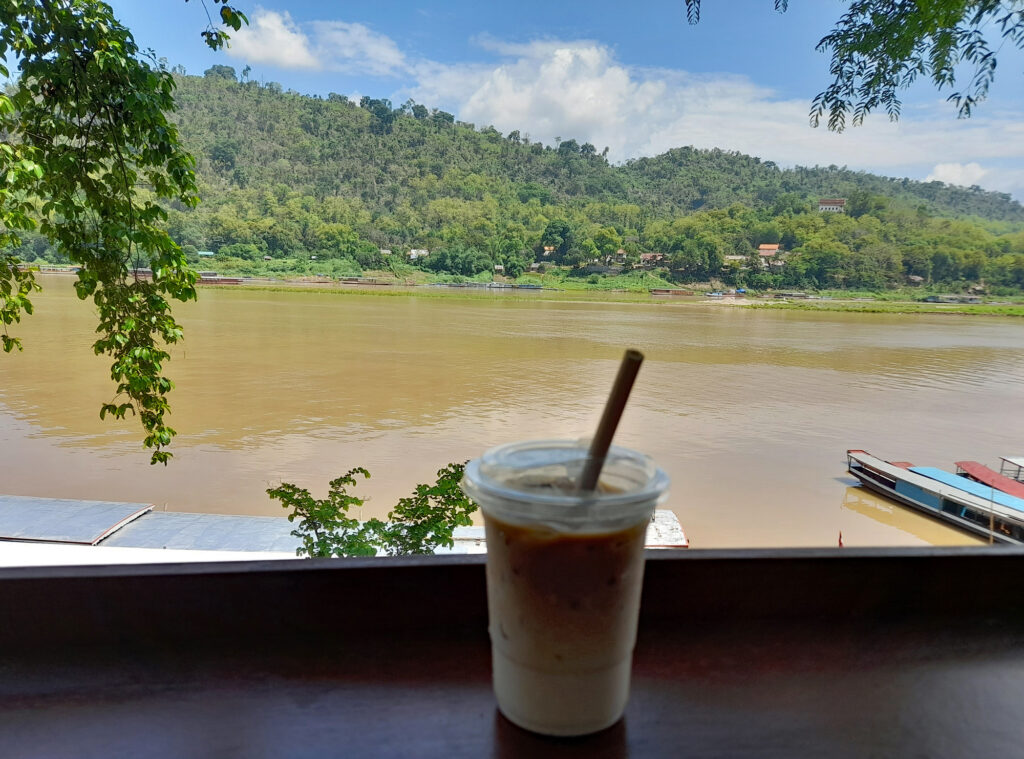
In the center of Luang Prabang is Phousi Hill and atop it sits a small Buddhist temple and golden stupa. Although its quite a climb, 328 steps will get you to the top of the hill. The 360-degree views of Luang Prabang, the Mekong and Nam Khan rivers are worth the effort. The entrance fee is 30,000 Kip (USD $1.40) each.
I mentioned earlier that the reason for our visit to Laos was to apply for another Vietnam visa, so we gave ourselves plenty of time in case there were any delays. We submitted our application as soon as we arrived in Laos on a Wednesday evening and our visas arrived by email the following Tuesday morning, 3 business days just as the website says. Our 30 day visas cost USD $25.75 each.
With our new Vietnam visas in hand we left Luang Prabang and flew back to Hanoi for our final couple of weeks touring some of the northern Vietnam countryside…..
TRIP TIPS
We thought we could get by without buying a SIM card for 9 days in Luang Prabang but it seems we need Google Maps to find our way home and to WhatsApp the hotel when we want them to send a shuttle to pick us up. Fortunately, our hotel sold them. For a 10 day-19GB card it cost 120,000 KIP (USD $5). Small price to pay for the convenience!
When we were at the Hanoi airport leaving Vietnam, we were asked to show our Vietnam visas, I was taken by surprise at this request and did not have them readily available. It took quite a while for me to find mine on my phone and once I showed it to the immigration officer, he cleared me to leave. I was unable to find Blair’s easily, and his immigration officer finally gave up and just waved him through. This seems to be a hit and miss situation, but heads up if you are leaving Vietnam, you may need to show your visa. We were not asked to show our Laos visa when leaving Laos, just our new Vietnam visa proving we would be allowed in when we landed.
The Lao currency can be quite volatile, so we found many places in Luang Prabang charged us in US dollars. There was a 3% add on to use our credit card but taking cash out of an ATM worked out about the same cost with all the ATM fees. Phongsavanh Bank has an ATM at the airport and we found a couple in town as well. They display the Visa and Mastercard symbols and we had no problems using their ATM’s.
If you want to see where we stay in our travels, head over to our accommodation page.
